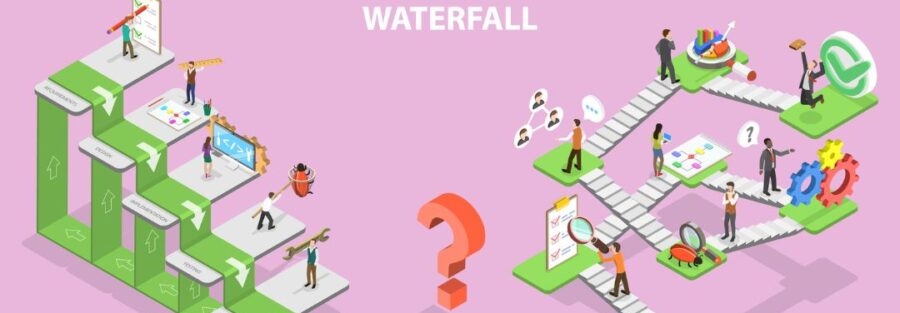Is Waterfall Project Management really outdated now, and Agile the only way forward?
Waterfall and Agile methodologies are two different approaches to project management, and each has its strengths and weaknesses. Whether one is preferred over the other depends on the specific context and requirements of the project at hand. Let’s take a closer look at both methodologies.
Waterfall Project Management
Waterfall is a linear and sequential approach to project management. It typically consists of distinct phases that follow a specific order, such as requirements gathering, design, implementation, testing, and deployment. Each phase is completed before moving on to the next, and there is minimal iteration or flexibility once a phase is completed.
Pros:
- Well-defined project scope and requirements at the beginning
- Clear milestones and deliverables
- Suitable for projects with stable and predictable requirements
- Documentation is often thorough
Cons:
- Less adaptable to changes during the project
- Limited customer involvement until the final stages
- High risk of delivering a product that does not meet evolving user needs
- Late identification of issues may require significant rework
Agile Project Management
Agile is an iterative and incremental approach to project management. It emphasizes collaboration, flexibility, and continuous improvement. Agile methods, such as Scrum or Kanban, focus on breaking down work into small, manageable tasks and delivering increments of the product at regular intervals. Feedback and adaptation are integral to the process.
Pros:
- Adaptability to changing requirements.
- Frequent collaboration and feedback with stakeholders.
- Early delivery of working software or product increments.
- Enhanced visibility into project progress.
Cons:
- Requires active and ongoing stakeholder involvement.
- Can be challenging for projects with undefined or unstable requirements.
- Heavy reliance on effective team communication and coordination.
- Documentation may be less comprehensive.
Now let’s get into some examples…
Developing a Video Game
For this example, let’s imagine a large-scale video game project with a well-defined concept, a detailed game design document, and a team of developers, artists, and testers. In this case, a waterfall approach may be suitable.
Why waterfall?
- The project has a clear scope, specific requirements, and a predefined plan.
- The game design, story, and mechanics are already established.
- There is limited expectation of major changes during development.
- The development team can work systematically through the different stages (e.g., design, art, programming, testing) without frequent iteration.
Note: While agile methodologies like Scrum could still be used for specific aspects of the project, such as bug tracking or content creation, the overall project management approach will benefit more from a waterfall model.
Building a Mobile App
Let’s consider a scenario where a startup is developing a mobile app for a new social networking platform. The app concept is innovative, but the specific features and user requirements are not fully defined yet. An agile approach would be more suitable here.
Why agile?
- The project involves a degree of uncertainty and rapidly evolving user needs.
- Frequent collaboration with potential users and stakeholders is necessary.
- Iterative development and continuous feedback are crucial to refine features.
- The ability to release minimum viable products (MVPs) quickly for user testing and feedback is important.
- Flexibility to adjust and adapt the app based on user preferences and market trends is needed.
- Agile methodologies, such as Scrum, can enable the team to embrace changes, respond to user feedback, and incrementally build and improve the mobile app.
Remember, these examples are simplified illustrations, and in real-world scenarios, project managers and teams need to carefully evaluate the unique circumstances and factors involved in their projects to make an informed decision about the most appropriate methodology to adopt.
Conclusion
In summary, neither approach is inherently “bad” or “everything.” Waterfall can be suitable for projects with well-defined requirements and a stable environment, while agile methodologies shine in situations where requirements are likely to change and flexibility is crucial. Some projects may even combine elements of both methodologies, known as hybrid approaches, to leverage their respective strengths.
Choosing the right project management approach depends on factors such as project complexity, stakeholder collaboration, adaptability requirements, and organizational context. Project managers should assess the specific project needs and select the most appropriate methodology or a tailored combination that aligns with those requirements.



